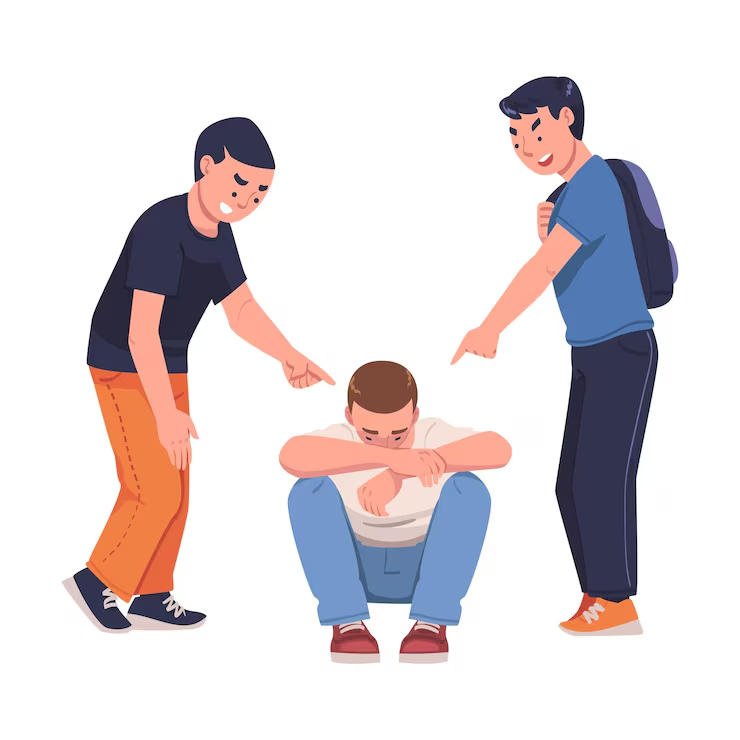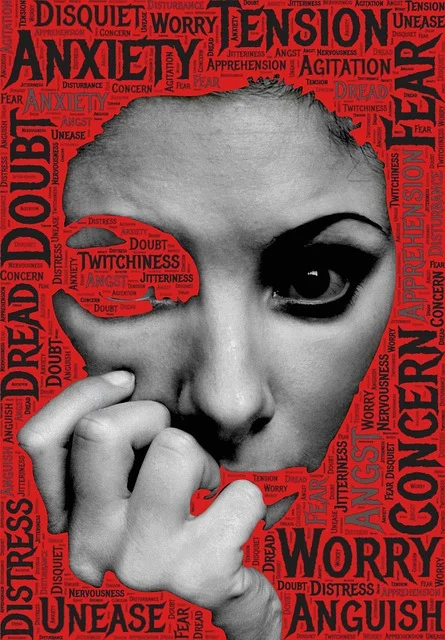Introduction
Teenage years are filled with emotional and psychological changes, and it’s not uncommon for adolescents to experience moments of insecurity, shyness, or self-consciousness. However, when these feelings evolve into something more persistent, they can lead to social anxiety disorder (SAD), a condition that can significantly impact a teenager’s social, academic, and personal life.

Social anxiety disorder is more than just shyness—it’s a mental health condition that causes intense fear and discomfort in social situations. Recognizing the early signs of social anxiety in teens is crucial because early intervention can help them develop coping strategies and seek professional help before the condition worsens. In this article, we’ll explore the signs of social anxiety disorder in teenagers, the 333 rule for managing anxiety, and other key insights to support teens dealing with anxiety.
What is Social Anxiety Disorder in Teens?
Social anxiety disorder (SAD) is a common mental health condition that affects many adolescents, often emerging between the ages of 13 and 18. Teenagers with social anxiety experience overwhelming fear and worry about being judged, embarrassed, or humiliated in social or performance-based situations. Unlike typical shyness, social anxiety can severely limit a teen’s ability to participate in normal social activities, make friends, or perform at school.
The causes of social anxiety disorder can be multifaceted. Genetics play a role—children of parents with anxiety disorders are more likely to develop SAD. Additionally, environmental factors, such as bullying or a history of negative social experiences, can contribute to the development of the disorder. Traumatic events or stressors like divorce, moving to a new place, or academic pressure can also trigger or worsen symptoms.
Social anxiety disorder in teens often manifests in behaviors such as avoiding eye contact, isolating themselves, or feeling extremely self-conscious in group settings. The fear of being negatively evaluated by peers can lead to avoidance of class participation, school dances, or even social events with friends. When left unaddressed, SAD can have long-term effects on mental health and well-being.
What Are the First Signs of Social Anxiety?
Identifying the early signs of social anxiety in teenagers is crucial for timely intervention. The first signs can often be mistaken for typical teen shyness or introversion, but with social anxiety disorder, these feelings are much more intense and persistent.

Here are some common early signs of social anxiety:
- Physical Symptoms:
- Sweating: Excessive sweating in social situations, especially when the teenager is being observed by others.
- Trembling: Noticeable shaking or trembling, particularly when the teen is expected to speak or perform in front of others.
- Blushing: Frequent and intense blushing when speaking in public or in group settings.
- Dry Mouth: Feeling like the mouth is dry or parched during social interactions.
- Racing Heart: An accelerated heart rate when in social situations, contributing to feelings of panic.
- Behavioral Symptoms:
- Avoiding Eye Contact: Teens with social anxiety often avoid making eye contact, feeling as if their every move is being scrutinized.
- Social Withdrawal: Choosing to stay at home rather than participate in social events like parties, group activities, or extracurriculars.
- Frequent Requests to Leave: Asking to leave social situations early due to overwhelming anxiety.
- Cognitive Symptoms:
- Excessive Worry: Teenagers with social anxiety may spend days or weeks worrying about an upcoming social event, such as a presentation or party.
- Fear of Judgment: An overwhelming fear of being criticized, humiliated, or judged by others, leading to avoidance of situations where they might be evaluated.
- Negative Self-Perception: Constantly doubting themselves and believing they are not good enough or worthy of acceptance.
These signs, though subtle at first, can escalate over time if not addressed. Early intervention can help ease the severity of symptoms, and supporting your teen with understanding and patience is critical.
What is the 333 Rule for Social Anxiety?
The 333 rule is a simple but effective tool for managing anxiety, particularly in social situations. This rule helps teenagers break down their overwhelming feelings of fear and panic by focusing on their surroundings and grounding themselves in the present moment. It’s a technique that can be applied in any situation where anxiety is triggered, such as before a public speaking event or when meeting new people.
The 333 rule consists of three steps:
- 3 Things You Can See: Encourage your teen to take a moment to observe three things in their immediate environment. This helps them divert their focus from their anxiety and instead ground themselves in the present.
- 3 Things You Can Hear: Ask them to listen to three different sounds. It could be the sound of a clock ticking, the rustling of papers, or voices in the background. This further helps to shift their attention away from negative thoughts.
- 3 Things You Can Feel: Have your teen notice three things they can physically feel. This could be the sensation of their feet on the ground, the fabric of their clothing, or the coolness of the air. This tactic helps them stay connected to their environment and distracts from the internal anxiety.
By using the 333 rule, teens can break the cycle of anxious thoughts and focus on their immediate surroundings, making it easier to manage social anxiety in the moment.
What Are the Signs of Anxiety in Teenagers?
While social anxiety disorder is a specific form of anxiety, many teens experience general anxiety, which can manifest in various ways. Here are some broader signs of anxiety in teenagers:
- Emotional Symptoms:
- Irritability: Teens with anxiety are often more irritable or easily frustrated, even with seemingly minor stressors.
- Excessive Worry: Constantly feeling nervous, anxious, or fearful about various aspects of their lives, from schoolwork to relationships.
- Difficulty Relaxing: Struggling to unwind or calm their mind, even during moments that should be relaxing, like watching TV or spending time with family.
- Behavioral Symptoms:
- Avoidance: Avoiding places, people, or situations that might trigger anxiety. For example, a teen might skip school or refuse to attend social gatherings because they feel overwhelmed.
- Procrastination: Putting off tasks or assignments due to fear of failure or feeling overwhelmed.
- Change in Sleep or Eating Patterns: Insomnia, nightmares, or changes in appetite are common among anxious teens.
- Physical Symptoms:
- Headaches: Frequent tension headaches or migraines.
- Stomachaches: Abdominal discomfort, nausea, or a feeling of tightness in the stomach.
- Fatigue: Chronic fatigue due to mental exhaustion from constant worry.
It’s important to recognize these symptoms in their broader context. Anxiety in teens can be triggered by school stress, peer pressure, family problems, or even social media exposure. Recognizing the signs early can help prevent long-term mental health issues, such as depression or eating disorders.
How to Help a Teen with Social Anxiety
Supporting a teen with social anxiety requires patience, understanding, and practical steps to help them manage their symptoms.
- Foster Open Communication: Encourage your teen to express their feelings without fear of judgment. Be patient and listen actively when they share their concerns.
- Promote Gradual Exposure: Encourage your teen to take small steps towards facing their fears. Start with less intimidating social situations and gradually move to more challenging scenarios, like giving a presentation in class or attending a larger social event.
- Teach Relaxation Techniques: Help your teen practice deep breathing, mindfulness, or progressive muscle relaxation to reduce the physical symptoms of anxiety.
- Encourage Professional Help: Cognitive Behavioral Therapy (CBT) has proven effective for treating social anxiety disorder. A licensed therapist can help your teen challenge negative thoughts and develop healthier coping mechanisms.
- Support Groups: Teen support groups for social anxiety can offer a safe space for your teen to share their experiences and learn from others going through the same challenges.
Conclusion
Recognizing the signs of social anxiety disorder in teenagers is essential for early intervention and support. Teens who struggle with social anxiety often feel isolated and misunderstood, but with the right support, they can learn to manage their symptoms and build healthier, more confident lives. By understanding the signs, using techniques like the 333 rule, and providing a supportive environment, you can help your teen navigate social anxiety with greater ease and resilience.
If you suspect that your teen is struggling with social anxiety, encourage them to talk openly about their feelings, and consider seeking professional help for further guidance. Early intervention is key to helping your teen thrive and overcome the challenges of social anxiety.



